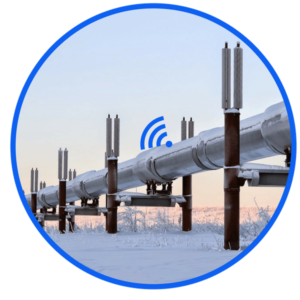The Internet of Things is Complex
We are in the process of blanketing our planet with billions of networked sensors and actuators.
These devices are embedded in consumer products, industrial systems, and the built and natural environment.
Once connected to each other, and to us, this "one machine" will reshape social interactions and market dynamics as we currently know them.
Diverse Use Cases
The range of applications enabled by Internet of Things technology adds to the complexity

Industrial Analytics

Energy harvesting sensor motes installed on a gas line

Passing data over mesh networks and long range low power networks

In order for its data to be analyzed by a predictive analytics engine.
Or on the other end of the spectrum

A voice activated services hub

Plugged into your home outlet and connected to your home router

Where data privacy and personal customization are a top priority.
Smart Home Service

Implications
Connected products by their nature create bi-directional interactions that flip assumptions for both the products creators and their users upside down.
Business Owners
- Upfront sales?
- Hardware as a Service (HaaS) subscription model
- From usage data?

End Users
- "Is the Internet down"?
- "Did my rules setup break"?
- "Is the API of the cloud service having issues"?

Designers & Developers
- Ongoing over-the-air firmware and security updates
- Machine learning and user feedback
- Evolving features and capabilities (See: Tesla's speed improvements)

In any system with a lot of moving parts, it’s often difficult to keep track of what’s going on.
The Connected Product Framework

A tool to navigate the complex network of interactions between technical components, user actions, and product service models.
A tool to navigate the complex network of interactions between technical components, user actions, and product service models.
The Connected Product Framework uses 4 key organizing elements:

1) Context
A general introduction and overview of the product.

2) Service
What does the product do?
What outside services/devices and stakeholders does it interact with?

3) Product
What is the product made up of? This can reference physical components like hardware to digital components like cloud service, data, and analytics.

4) Interaction
What is the relationship between the device/service and the
user? Does it change over time and context?

These 4 criteria combined create a feedback loop that allows us to visualize the how connected products and services work and improve over time.

You can use the CPF in several different ways:
1) Portray a single product user experience

2) Blueprint a complex use case

Want to use the framework to help organize and simplify your own projects?
Go ahead and download it below.


